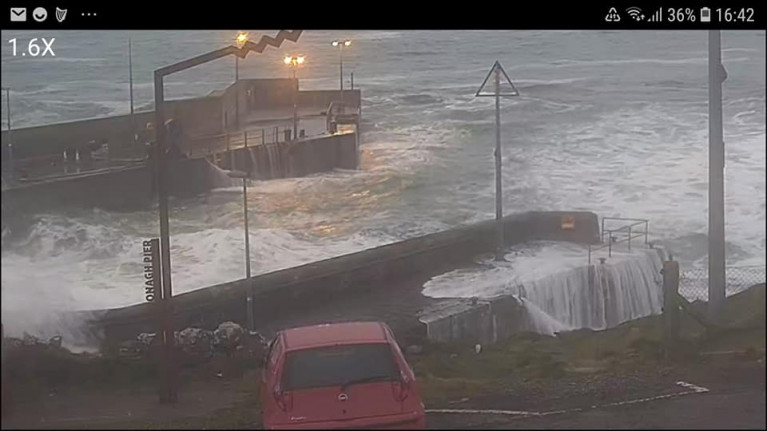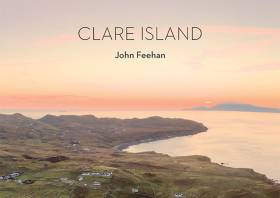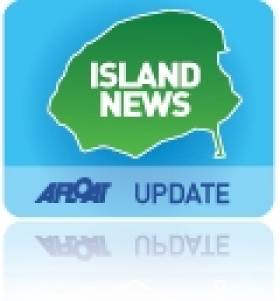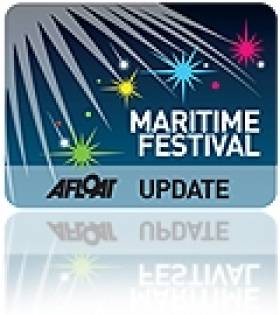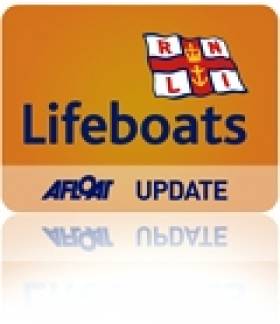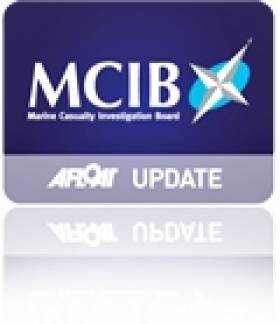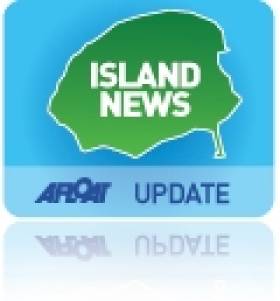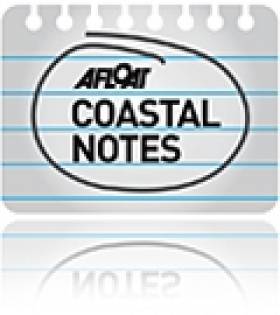Displaying items by tag: Clare Island
Renewed Plea from Mayo Islanders Over Pier Problems
Clare Island residents and also those on Inishturk, off the west Mayo coastline, are calling on the Irish government for urgent help.
In the past two months 52% (see: January story) of their scheduled ferries have been disrupted due to dangerous conditions at Roonagh Pier, west of Louisburgh.
The pier experiences huge Atlantic swells and can be inaccessible for weeks at a time.
As a result O’Grady’s Clare Island Ferry Co. is forced to sail to Cloughmore in Achill Island, which is a commercial pier, unsuitable for foot passengers.
If the islanders sail to Achill, they then have to travel 50 miles by taxi around Clew Bay to collect their cars which are left at Roonagh.
The situation is causing them huge disruption and unnecessary misery.
More on the story from The Connacht Telegraph.
Ferry Operator in Mayo Issues Call for New Pier Facilities
A ferry operator in Co. Mayo has issued a call for break-water and new pier facilities at Roonagh, Louisburgh.
According to The Connaught Telegraph, the Clare Island Ferry Co. (O'Grady) posted a photograph on ts Facebook page of Roonagh (yesterday) with the following statement.
"Goes to show we really need a break water and a new pier with shelter for our island vessels, in order for daily access for passengers, cargo and for our island to survive."
New Book On Clare Island ‘Shines Spotlight On Its Richness Of Life’
One hundred years ago, Irish naturalist Robert Lloyd Praeger led a survey of the natural history and cultural heritage of Clare Island in Co Mayo at a level of detail greater than any area of comparable size at that time.
Almost a century later, the Royal Irish Academy set about repeating the exercise with the intention of assessing and evaluating change on the island over the intervening years.
In his new book Clare Island, which launches this Saturday 5 October on the island itself, John Feehan distils the results of the two great surveys with elegance and enthusiasm to shine a spotlight on the richness of life surviving there.
Feehan, a longtime broadcaster on cultural and heritage issues, interweaves the natural and cultural heritage of the island and shares his wider ecological knowledge to help us understand the role each species plays in the life of this remarkable place.
“Few places on Earth, and none elsewhere in Ireland, have yielded such a concentrated inventory of knowledge about the natural world,” says Michael Viney, who has described Feehan as “one of Ireland’s top ecologists and communicators of nature”.
Clare Island by John Feehan is available now from the RIA, priced €40.
Clare Island Raft-Building Championships & Family Fun Day
#clareisland – Buoyed by the recent profile received by Clare Island in the Irish Times Best Place to Go Wild in Ireland competition, Clare Island Adventures are planning an exciting new event for the August Bank Holiday weekend. Your mission, should you choose to accept it, is to put together a water-loving team of four to six people to build a raft and then race it around a 300 metre course in Clew Bay.The organisers are challenging towns, villages, islands, companies and rival sports clubs to take one another on in what promises to be a barrel of laughs for both spectators and participants. They will provide all safety gear and raft-building materials. All you need to do is show up in a swimsuit with a can-do attitude and a determination to complete the course.
Heats will take place on Sunday morning with the final taking place in the early afternoon and finish in time to watch the Mayo match which kicks off at 4pm. There will be prizes awarded to the top 3 places, plus a Best Fancy Dress team prize. Entry is €60 per team.
And weather permitting the music will be pumping and the barbecue will be smoking, making it a fun day out for spectators and participants alike. To encourage you to make a weekend out of it, there's an all-in deal on offer of two nights B&B in the hostel, return ferry and raft-building entry for €74 per person.
Families looking for entertainment for the whole weekend are also encouraged to come a day early with a family fun day taking place on the blue flag beach on Saturday afternoon. Kayaking, snorkelling and beach games will all be on offer.
Those planning to visit the island for the bank holiday, or any time in July or August, will also be interested to know that there is a new shuttle bus service operating between Westport and Roonagh five days a week. It departs from Westport Adventure Hub, James Street, where tickets for bus and ferry can be purchased together. Leaving Westport at 10.15am and Roonagh at 5.15pm.
For more information check here. To enter a team in the raft building championships email them on [email protected] or phone 087 3467713.
#MaritimeFestivals - If you’re looking for a buzzing destination to spend the August bank holiday weekend, consider Clare Island in Co Mayo for the first Raft Building Championships, which promises seaside festival fun for all ages.
The organisers at Clare Island Adventures are challenging towns, villages, islands, companies and rival sports clubs to put together teams of four to six people to build a raft, then take one another around a 300-metre course in Clew Bay in what's expected to be a barrel of laughs for both spectators and participants alike.
Clare Island Adventures will provide all safety gear and raft-building materials. All you need to do is show up in a swimsuit with a can-do attitude and a determination to complete the course.
Prizes will be awarded to the top three places, as well as for the best dressed team – so the team theme is just as important as how you perform on the course!
Back on dry land, meanwhile, the music will be pumping and the barbecue will be smoking (weather permitting, of course).
Heats will take place on Sunday morning with the final taking place in the afternoon at approximately 4.30pm, allowing time for teams and spectators to get the ferry back to the mainland if they’re not staying on the island for the night.
To encourage you to make a weekend out of it, there’s an all-in deal on offer of two nights B&B in the hostel, return ferry and raft-building entry for €74 per person.
Families looking for entertainment for the whole weekend are also encouraged to come a day early with a family fun day taking place on the Blue Flag beach on Saturday afternoon. Kayaking, snorkelling and beach games will all be on offer.
Those planning to visit the island for the bank holiday, or any time in July or August, will also be interested to know that there is a new shuttle bus service operating between Westport and Roonagh five days a week.
The bus departs from Westport Adventure Hub on James Street, where tickets for bus and ferry can be purchased together. Buses leave Westport at 10.15am and Roonagh at 5.15pm.
For more information on the Raft Building Championships check out www.clareislandadventures.ie. To enter a team (the entry fee is €60 per team), contact 087 346 7713 or [email protected].
Tender Open to Run Mayo Islands Cargo-Ferry Service
#IslandFerry – The Government have issued a tender for an operator to run over a five-year contract period a cargo-ferry service between Inishturk, Clare Island Co. Mayo and the mainland.
The Department of Arts, Heritage and the Gaeltacht is seeking expressions of interest for the west coast-islands service starting 1 August 2013 to 31 July 2018.
For further details of the tendering process they can viewed HERE in addition to www.etenders.gov.ie April 2013
Lifeboat Crews Tow Vessel From Rocks Off Waterford
#Lifeboats - TheJournal.ie reports that RNLI lifeboat crews from Dunmore East and Fethard rescued two fishermen from their vessel off the Waterford coast yesterday (14 January 2013).
Rescuers sped to the scene after the 10-metre fishing boat got into difficulty and grounded close to the shore north of Loftus Hall.
Despite the receding tide, the lifeboats managed to tow the vessel carefully off the rocks "without any major damage", according to a spokesperson. The two crew were uninjured in the incident.
It marked the third major call-out in a week off the Waterford coast - following a similar rescue effort last Tuesday, and just days after the tragic loss of a local fisherman on Thursday morning on the sixth anniversary of the sinking of Dunmore East trawler the Pere Charles.
Meanwhile, on Sunday afternoon volunteers with Achill Island RNLI went to the assistance of an injured fisherman off the Mayo coast.
The lifeboat station received the distress call around noon to go to the assistance of a fishing party north of Clare Island, where the crew removed a man from the vessel who had suffered an eye injury from a fishing hook.
He was subsequently transported on the lifeboat to Kildavnet, where a local doctor examined his injury before referring him to Castlebar General Hospital for further attention.
Four Deaths At Sea Set To Be Investigated
#MCIB - The bodies of two fishermen missing off Co Clare have been recovered, as The Irish Times reports.
Local divers found the remains shortly before lunchtime yesterday near Spanish Point as coastguard teams searched for a missing fishing boat.
As previously reported on Afloat.ie, the Lady Eileen - with two crew on board - was due to return to Quilty on Monday evening.
Searchers discovered debris and diesel in the water near Spanish Point in the early stages of the search on Monday night.
Meanwhile, the body of a father-of-three from Clare Island in Co Mayo was recovered from the sea by local fishermen last night.
The man - whose name is being withheld till all relations have been informed - was reported missing by a relative after he failed to return from a fishing trip in his currach.
The Marine Casualty Investigation Board (MCIB) is expected to open investigations into both incidents, as well as the death of John O'Leary of Allihies in West Cork, who lost his life after the Enterprise dinghy he was sailing with his son capsized off the Beara Peninsula on Monday.
New Hostel Will Attract More Visitors to Clare Island
#ISLAND NEWS - The Junior Minister for Tourism was on hand at the official opening of the Go Explore Hostel and Praeger Education Centre on Clare Island last weekend, as the Mayo News reports.
“This new venture will spearhead Clare Island’s new marketing strategy by providing a platform to showcase all that the island has to offer to prospective visitors," said Minister of State Michael Ring.
"And we know that Clare Island has much to offer from great B&Bs, cafes, walking tours, bike hire, sea angling and scenic boat trips.”
The hostel opening is the result of an ambitious restoration project for the building, which served as a hotel before it was partially damaged by fire some five years ago.
Proprietor Carl O’Grady said the new hostel would be run in partnership with the growing number of niche businesses operating on the island at the mouth of Clew Bay.
Brian Quinn of Fáilte Ireland also described it as "a fantastic investment in the island", emphasising Clare Island's place at the end of the new Granuaile Cycling Trail.
The Mayo News has more on the story HERE.
Economic Development of the Islands – Minister Launches Report
The Minister for Community, Equality and Gaeltacht Affairs, Pat Carey, T.D., has announced the launch of a report on the employment needs and the economic development potential of the islands. The economic consultants, FGS Consulting, were commissioned by the Department of Community, Equality and Gaeltacht Affairs to compile the report under the direction of a steering committee made up of representatives from Comhar na nOileán, Údarás na Gaeltachta and the Department itself. The report's recommendations relate to the following areas:
- Issues related to the cost of living and to improving the islands' infrastructure;
- Cost factors that prevent the establishment and operation of commercial enterprises on the islands;
- The islands' development potential and the employment needs of island communities;
- Recommendations regarding further targeted support measures which would be aimed at the promotion of sustainable development and job creation; and
- The costs and advantages relating to any of the new measures recommended to support investment.
Minister Carey said that the Department would use the report as a basis for the development of further policies in relation to the islands in the coming years and that he hoped that some of the recommendations could be put in place in the short term at very little cost. He said, "We now intend to carry out a further examination of the various recommendations made in the report in consultation with other relevant Departments and state agencies to establish the most practical method of implementation."
A copy of the complete study is available on the Department's website www.pobail.ie.
Further Information:
The following is a list of the islands which were included in the study:
Island County Population
Toraigh Donegal 142
Árainn Mhór Donegal 522
Clare Island Mayo 136
Inishturk Island Mayo 58
Inishbofin Galway 199
Árainn Galway 824
Inis Meáin Galway 154
Inis Oírr Galway 247
Bear Island Cork 187
Sherkin Island Cork 106
Cléire Cork 125



























